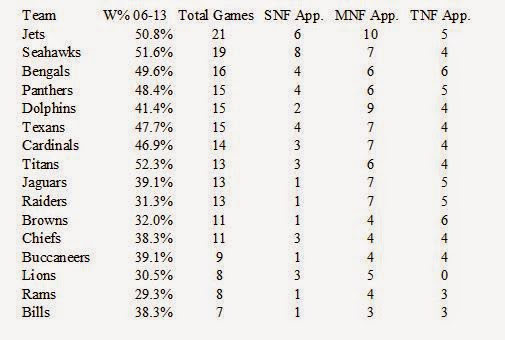Anyway, in addition to updating the data with 2014 results, I changed how the adjusted payroll was calculated. Instead of using general economic inflation, I adjusted each season's average payroll to equal the same amount (about $115 million). This merges the two team graphs from last time into one. It both provides a peer group comparison and factors in rising player costs.
For example, the New York Yankees' $206 million spent in 2005 (league average was $73 million) turns into $325 million in 2014 dollars because of how much more money the league spends on payroll now. I started the baseball CPI in 2000 at base 100 and in 2014, it has ballooned to 207 (meaning salaries have more than doubled in this time span).
Without further adieu, here's the updated graph...
2014 was a season of revenge for the traditional underdogs. The Pirates and Royals are in the postseason together for the first time in MLB history. For the Royals, it's the team's first playoff appearance since 1985. For the Pirates, it's only the second occurrence since 1992 (and both happened in the past two seasons).
The new model didn't change the results as much as I thought it would. Teams are now just further to the right on the X-axis, but the best-fit curve moved with it. Adding 2014 slightly moved MLB teams closer to the mean (there's a higher R-square and correlation than last year).
The top five most improved teams by adding 2014 (in order) were the Orioles, Royals, Pirates, Nationals/Expos and Mariners. And the biggest drop-offs (in order) Phillies, Rangers, Red Sox, D-backs and the Twins. The Rangers and D-backs went from above the line in 2013 to below when including 2014.
Once again, the A's are the "Moneyball" winner, but the enormous lead over the Cardinals shrunk. The Angels had the best record in MLB this year, and passed the Twins. Despite, the Orioles, Royals, and Pirates' improvements in 2014, they still need a few more good seasons to get back to league average. The expected win percentage is based on the baseball CPI figure from the right (it's also shown in the graph). There are 15 seasons documented.






